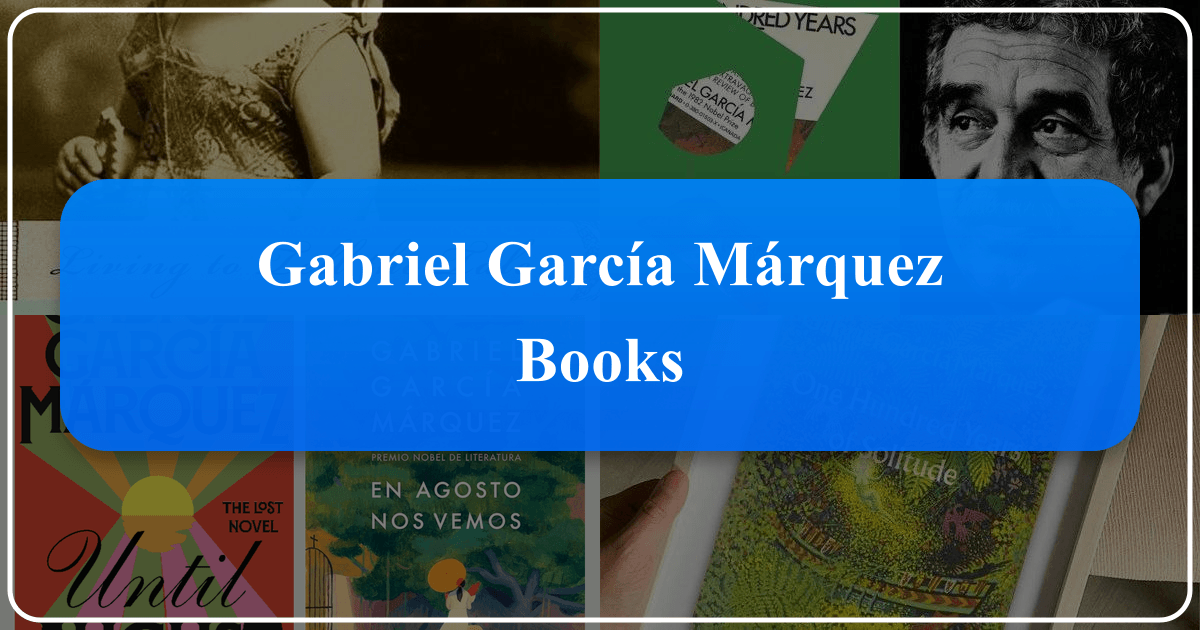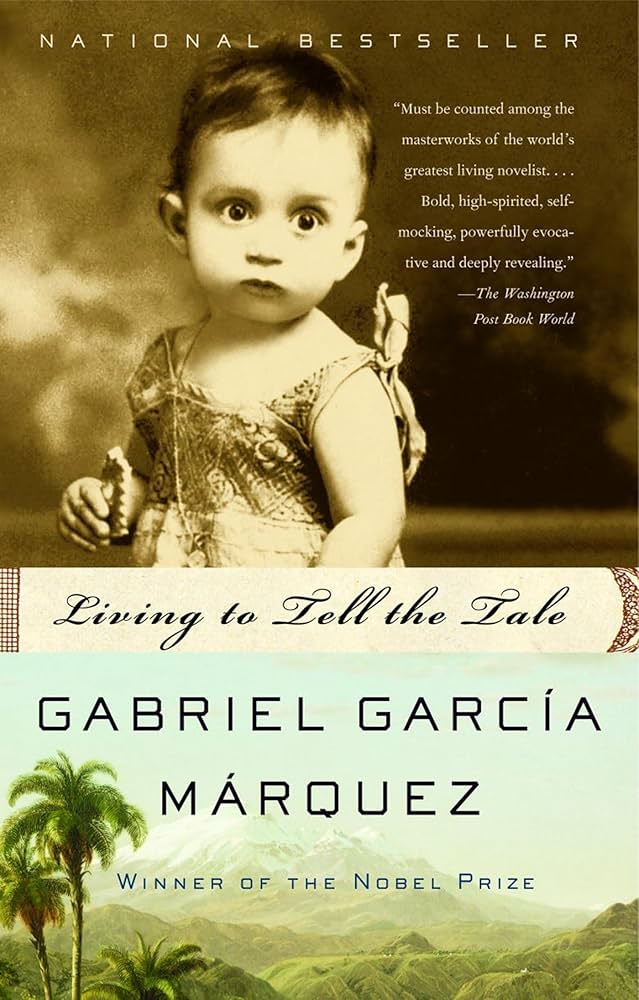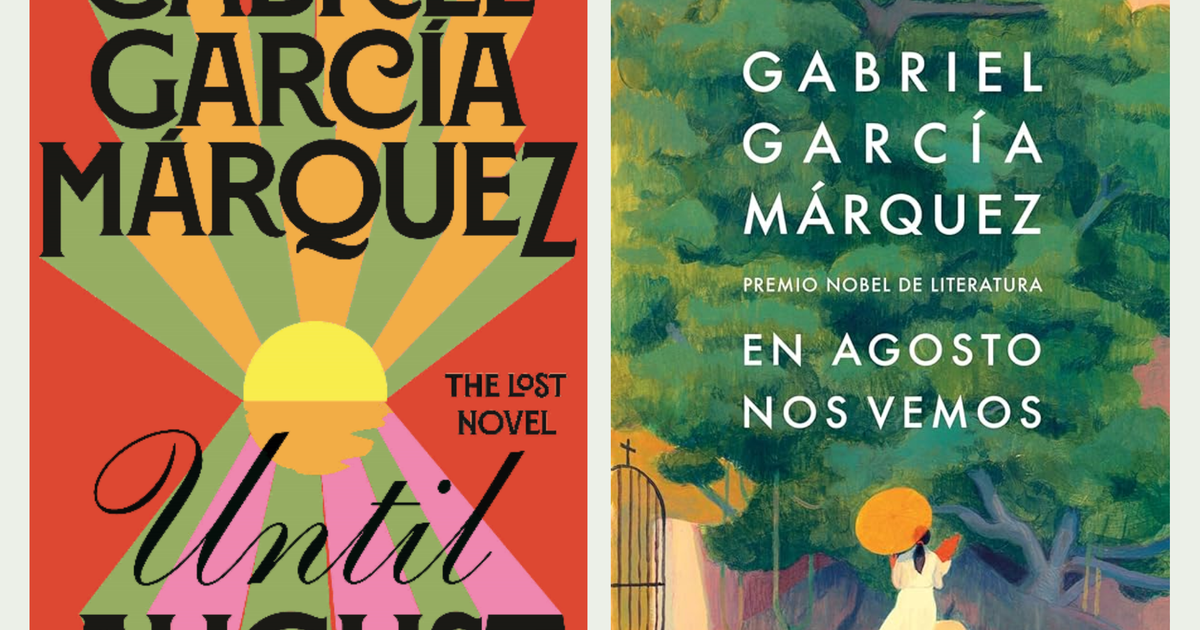Gabriel García Márquez Books: A Comprehensive Guide

Gabriel García Márquez, a literary giant of the 20th century, captivated readers worldwide with his unique blend of magical realism and insightful social commentary. His works, celebrated for their lyrical prose and unforgettable characters, have earned him a place among the most influential authors of all time, culminating in the prestigious Nobel Prize in Literature in 1982. While widely recognized for his fiction, García Márquez’s career also encompassed a significant period as a talented journalist, a profession he considered paramount to his identity. This exploration delves into the breadth and depth of his literary output, examining his various genres, highlighting his enduring classics and bestsellers, and analyzing his lasting cultural impact.

Gabriel García Márquez: A Life in Literature
García Márquez’s life was intricately interwoven with his writing. Born in 1927 in Aracataca, Colombia, his childhood experiences, particularly the vibrant and often fantastical atmosphere of his hometown, profoundly influenced his literary style. This early immersion in a world brimming with myth and legend laid the groundwork for the magical realism that became his signature. His early career as a journalist instilled in him a keen eye for detail and a commitment to truthful storytelling, which permeates even his most fantastical narratives. He honed his craft through years of reporting, working for various newspapers and even serving as a foreign correspondent. This background is evident in the meticulous descriptions and carefully constructed plots of his novels. The Nobel Prize bestowed upon him in 1982 served as an international recognition of his exceptional contribution to world literature, affirming his place among literary greats. His death in 2014 left a void in the literary world, but his legacy continues to inspire and engage new generations of readers.
Exploring the Genres: From Journalism to Magical Realism
García Márquez’s body of work is remarkably diverse, spanning genres that reflect his multifaceted career and creative vision. His early journalistic endeavors provide a compelling backdrop to his fictional works. His commitment to factual accuracy shines through in books like News of a Kidnapping, a gripping account of a real-life kidnapping, and Clandestine in Chile, which recounts a director’s daring covert filmmaking project during a time of political turmoil. These works demonstrate his skill in crafting narratives that are both compelling and grounded in reality.

However, it’s his fictional works that truly cemented his global fame. He masterfully blended magical realism, a genre he helped to define, with poignant social realism. This unique approach gives his stories a dreamlike quality while grounding them in the political and social realities of Latin America. His most famous novels, One Hundred Years of Solitude and Love in the Time of Cholera, showcase this blend perfectly. The former is an epic saga spanning generations, depicting the cyclical nature of history and the enduring power of family ties within the fantastical town of Macondo. Love in the Time of Cholera is a sweeping romantic epic that unfolds against the backdrop of Colombian history, exploring themes of love, loss, and the enduring power of memory. His other novels, such as Of Love and Other Demons and The General in His Labyrinth, explore similar themes, often infused with a magical element, while delving into historical and political contexts. His shorter works, often collected in anthologies like Strange Pilgrims, offer varied perspectives and explore the human condition through concise and captivating storytelling. This versatility, encompassing both journalistic precision and imaginative flights of fancy, highlights the extraordinary range of García Márquez’s literary talent.

Gabriel García Márquez’s Books: A Selection of Key Works
García Márquez’s bibliography is extensive and rich. Highlighting specific titles allows a more focused appreciation of his literary achievements. A selection of his most notable works, categorized for ease of navigation, follows:
Classics and Bestsellers:
-
One Hundred Years of Solitude (Cien años de soledad): Arguably his most famous work, this novel is a multi-generational saga exploring the Buendía family and their mythical town, Macondo. It is a cornerstone of magical realism, seamlessly intertwining fantasy with stark realities.
-
Love in the Time of Cholera (El amor en los tiempos del cólera): A sweeping romance following Florentino Ariza’s lifelong devotion to Fermina Daza, this novel deftly explores the complexities of love, perseverance, and societal expectations across several decades. The illustrated edition provides a unique visual complement to the narrative.
-
Chronicle of a Death Foretold (Crónica de una muerte anunciada): A masterclass in suspense, this novel unravels the events leading up to a foretold murder, highlighting the role of societal complicity and the inability to change fate.
-
Autumn of the Patriarch (El otoño del patriarca): This epic political allegory explores the rise and fall of a long-reigning dictator, highlighting power, corruption, and the consequences of unchecked authority. Its non-linear narrative creates a compelling and unsettling reading experience.
Other Notable Works:
-
Of Love and Other Demons (Del amor y otros demonios): A shorter but equally impactful novel set in 18th-century colonial Colombia, this work delves into the forbidden love between a young girl and a priest, incorporating elements of myth and superstition.
-
Memories of My Melancholy Whores (Memoria de mis putas tristes): This novel, often considered controversial, explores themes of aging, love, and mortality through the lens of an elderly man’s reflection on his life and a unique relationship with a young woman.
-
The General in His Labyrinth (El general en su laberinto): A historical novel focused on Simón Bolívar, the liberator of South America, this work provides a nuanced portrayal of a historical figure, highlighting the complexities of his personality and legacy.
-
News of a Kidnapping (Noticia de un secuestro): A non-fiction account of Pablo Escobar’s kidnapping of several prominent Colombians, this work showcases García Márquez’s journalistic skills and his deep concern for the political turmoil in his home country.
-
Living to Tell the Tale (Vivir para contarla): A fascinating memoir offering personal insights into García Márquez’s life and the influences that shaped his writing. It provides a valuable context for understanding his works.
-
I’m Not Here to Give a Speech (No vengo a dar un discurso): A collection of speeches delivered throughout his lifetime, this offers insight into García Márquez’s beliefs and ideas on various social, political, and literary matters.
-
Until August (Hasta agosto): Rediscovered posthumously, this novel explores themes of freedom, regret, self-transformation, and love’s mysteries through the lens of a woman’s unusual annual tradition.
Gabriel García Márquez’s Literary Influence and Cultural Impact
García Márquez’s impact extends far beyond the literary realm. His unique style, themes, and narrative techniques have left an indelible mark on world culture. His influence is evident in:
Literary Influence:
-
Magical Realism: García Márquez significantly contributed to the popularization and refinement of magical realism. His seamless blending of fantasy elements into realistic settings has inspired countless authors in Latin America and beyond.
-
Narrative Techniques: His experimental narrative structures, non-linear storytelling, and use of detailed descriptions have influenced subsequent generations of writers.
-
Thematic Concerns: His exploration of universal themes, including love, loss, family, power, social injustice, and the complexities of history, resonates with readers across cultures and time periods.
Adaptations and Awards:
Many of his works have been adapted into successful films, plays, and television series, bringing his stories to wider audiences and showcasing the visual potential of his narratives. His accolades extend beyond the Nobel Prize to include numerous other awards, cementing his place as a literary icon.
Communities and Celebrations:
García Márquez has cultivated devoted communities of readers worldwide, fostering discussions, interpretations, and celebrations of his works, ensuring his legacy continues to thrive.
This exploration has only scratched the surface of the vast and enriching world of Gabriel García Márquez’s literary contributions. His works continue to be studied, analyzed, and celebrated, demonstrating their enduring power and influence. Further exploration through Lbibinders.org and other reputable sources will unveil even more of the profound artistry and lasting impact of this remarkable writer.